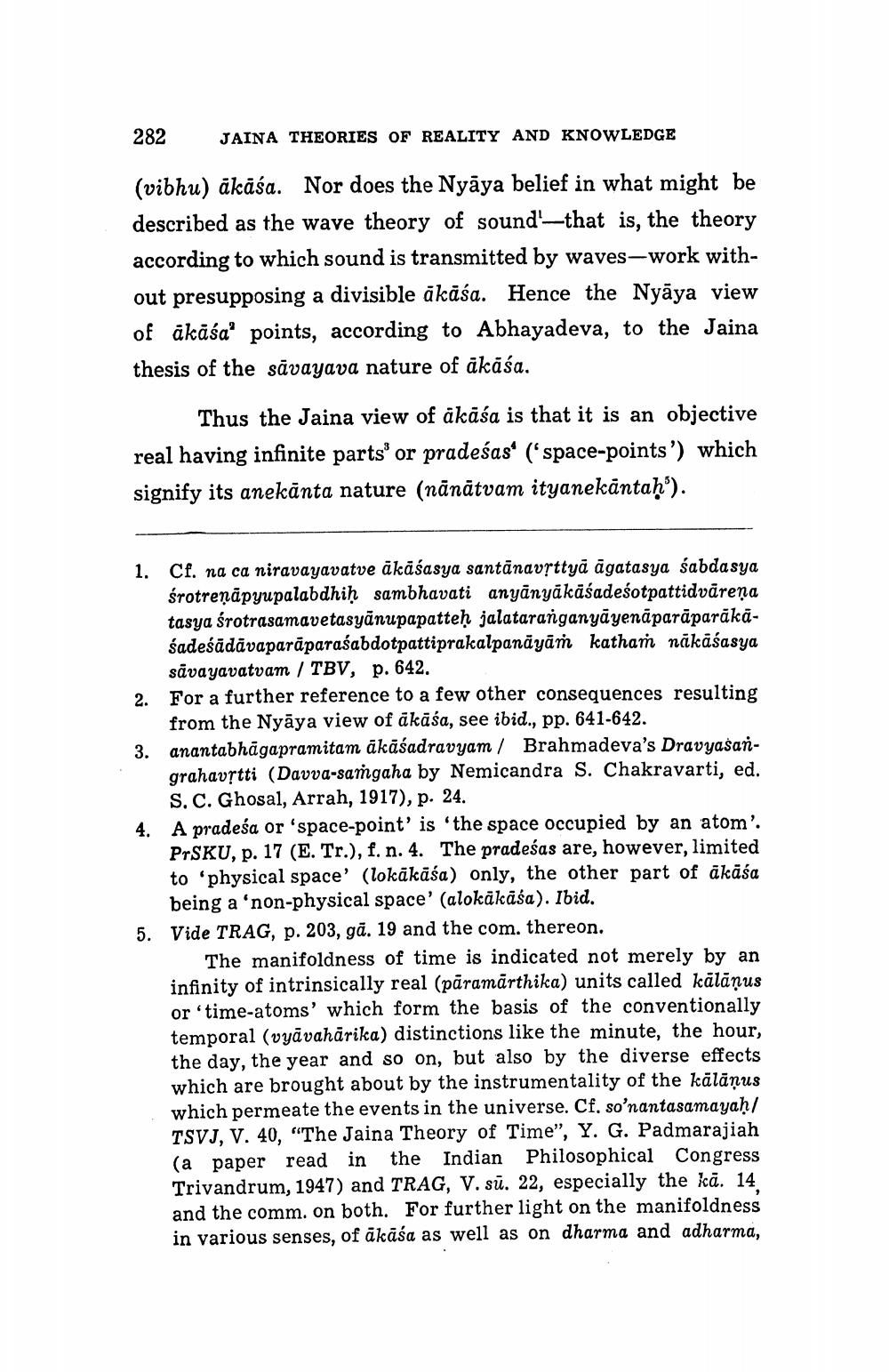________________
282
JAINA THEORIES OF REALITY AND KNOWLEDGE
(vibhu) åkāśa. Nor does the Nyāya belief in what might be described as the wave theory of sound—that is, the theory according to which sound is transmitted by waves-work without presupposing a divisible ākāśa. Hence the Nyāya view of äkāśa' points, according to Abhayadeva, to the Jaina thesis of the sāvayava nature of äkāśa.
Thus the Jaina view of äkāśa is that it is an objective real having infinite parts' or pradeśas“ ('space-points') which signify its anekānta nature (nānātvam ityanekāntaḥ').
1. Cf. na ca niravayavatve ākāśasya santānavșttyā āgatasya śabda sya
śrotreņāpyupalabdhiḥ sambhavati anyanyákāśadeśotpattidvarena tasya śrotrasamavetasyānupapatteh jalataranganyāyenāparāparākāsadeśādāvaparāparaśabdotpattiprakalpanāyāṁ katham nākāśasya
sävayavatvam / TBV, p. 642. 2. For a further reference to a few other consequences resulting
from the Nyāya view of ākāśa, see ibid., pp. 641-642. 3. anantabhāgapramitam ākāśadravyam/ Brahmadeva's Dravyasan
grahavṛtti (Davva-samgaha by Nemicandra S. Chakravarti, ed.
S.C. Ghosal, Arrah, 1917), p. 24. 4. A pradeśa or 'space-point' is 'the space occupied by an atom'.
PrSKU, p. 17 (E. Tr.), f. n. 4. The pradeśas are, however, limited to physical space' (lokākāśa) only, the other part of äkāśa
being a 'non-physical space' (alokākāśa). Ibid. 5. Vide TRAG, p. 203, gā. 19 and the com. thereon.
The manifoldness of time is indicated not merely by an infinity of intrinsically real (pāramārthika) units called kälānus or 'time-atoms' which form the basis of the conventionally temporal (vyāvahārika) distinctions like the minute, the hour, the day, the year and so on, but also by the diverse effects which are brought about by the instrumentality of the kālāņus which permeate the events in the universe. Cf, so'nantasamayah/ TSVJ, V. 40, "The Jaina Theory of Time", Y. G. Padmarajiah (a paper read in the Indian Philosophical Congress Trivandrum, 1947) and TRAG, V. sū. 22, especially the kā. 14 and the comm. on both. For further light on the manifoldness in various senses, of ākāśa as well as on dharma and adharma,




